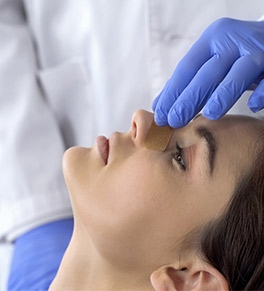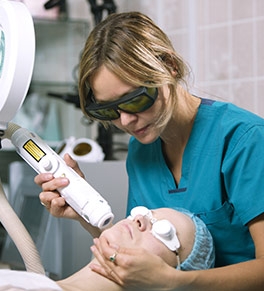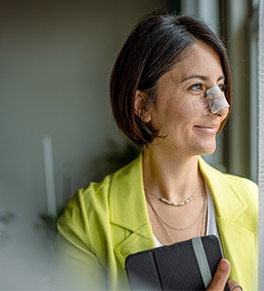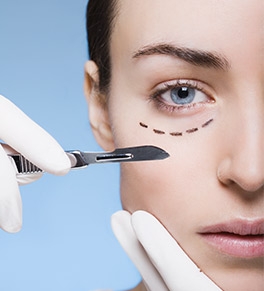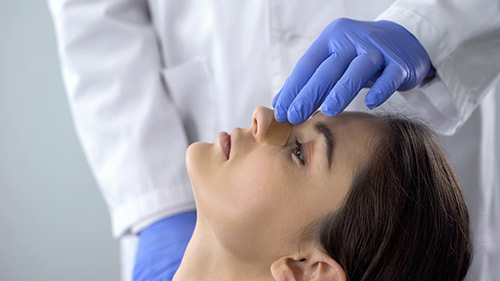
The size and shape of your nose sets the tone for the rest of the face as it anchors your facial appearance and greatly affects how your profile looks. A nose that doesn’t fit the proportions of your face, bumps in your nose, asymmetry, crookedness, and other factors can negatively impact your appearance. Even if your nose has no visible areas you’d like to improve, misshapen internal structures can impact your breathing and lead to negative health effects.
What is a rhinoplasty?
Rhinoplasty, also known as a nose job or nasal reshaping, is a surgical procedure performed for both cosmetic and functional improvements. Each rhinoplasty involves reshaping the nasal cartilage and/or bone to produce a more natural and balanced nose shape that enhances your appearance and improves facial harmony. Reconstructive rhinoplasty can also open your nasal passages if they are blocked by misshapen or collapsed cartilage or bone.
What is a rhinoplasty used for?
A rhinoplasty can be used to:
- Change the nose size to improve facial balance
- Change the nose width at the bridge
- Modify the size and/or position of the nostrils
- Improve the nose profile by removing visible bumps or depressions on the bridge
- Correct an enlarged, bulbous, drooping, upturned or hooked nasal tip
- Improve nasal asymmetry
- Fix an obstructed airway in the nasal structure
What is involved?
First, you’ll receive an anesthetic/sedation to keep you comfortable during the procedure.
Then, the rhinoplasty is performed during an open or closed procedure. In closed rhinoplasty, the incisions are concealed inside the nose. In open rhinoplasty, an incision is made across the surface of the section of tissue that separates the nostrils. Through the incision(s), the surgeon raises the skin that covers the nasal bones and cartilages and reshapes the nose’s structure.
An oversized nose may be reduced by removing bone or cartilage. In some cases, cartilage grafts are used to reshape the nose. Typically, grafting cartilage is taken from the partition in the middle of the nose (the septum). Ear cartilage, or less commonly rib cartilage, can also be used for grafting. If you have a deviated septum, it is corrected or reduced during the rhinoplasty to improve breathing. Once the underlying nasal structures are reshaped, the nasal skin and tissue are repositioned and the incision(s) are closed.
For a few days, soft splints may be worn to support the nose as it starts to heal. Most people can return to work within 7-10 days and resume full physical activity after two to four weeks. There will be some swelling that can take months to fully recover, though most people stop noticing it sooner.
What results can you expect after nose surgery?
Small changes to the structure of your nose, measured in millimeters, can have a huge impact in how your nose looks and how you feel about your overall facial appearance. As your nose heals and refines over time (it may take up to a full year to see the entirety of your results), you’ll continue to see changes in the appearance of your nose.
Dr. Cecil Yeung - Best Rhinoplasty Surgeon in Houston
Cecil Yeung, MD, FACS, is a top facial plastic surgeon with more than 20 years of experience in facial plastic surgery in Houston with a special focus in rhinoplasty. Dr. Yeung is double board-certified in facial plastic surgery as well as otolaryngology, also known as the ear, nose, and throat (ENT) specialty.
Find the Best Rhinoplasty Surgeon: Contact Dr. Yeung Today
If you’d like to change the appearance of your nose using the best rhinoplasty surgeon,contact our Houston office today to learn more about rhinoplasty procedures. You can also contact us by filling out the appointment request form located on this page.

